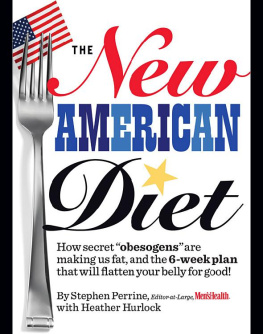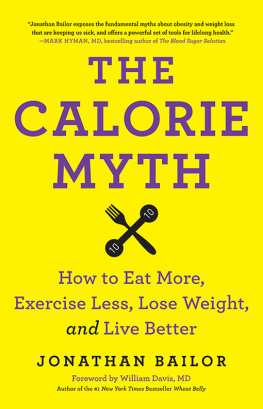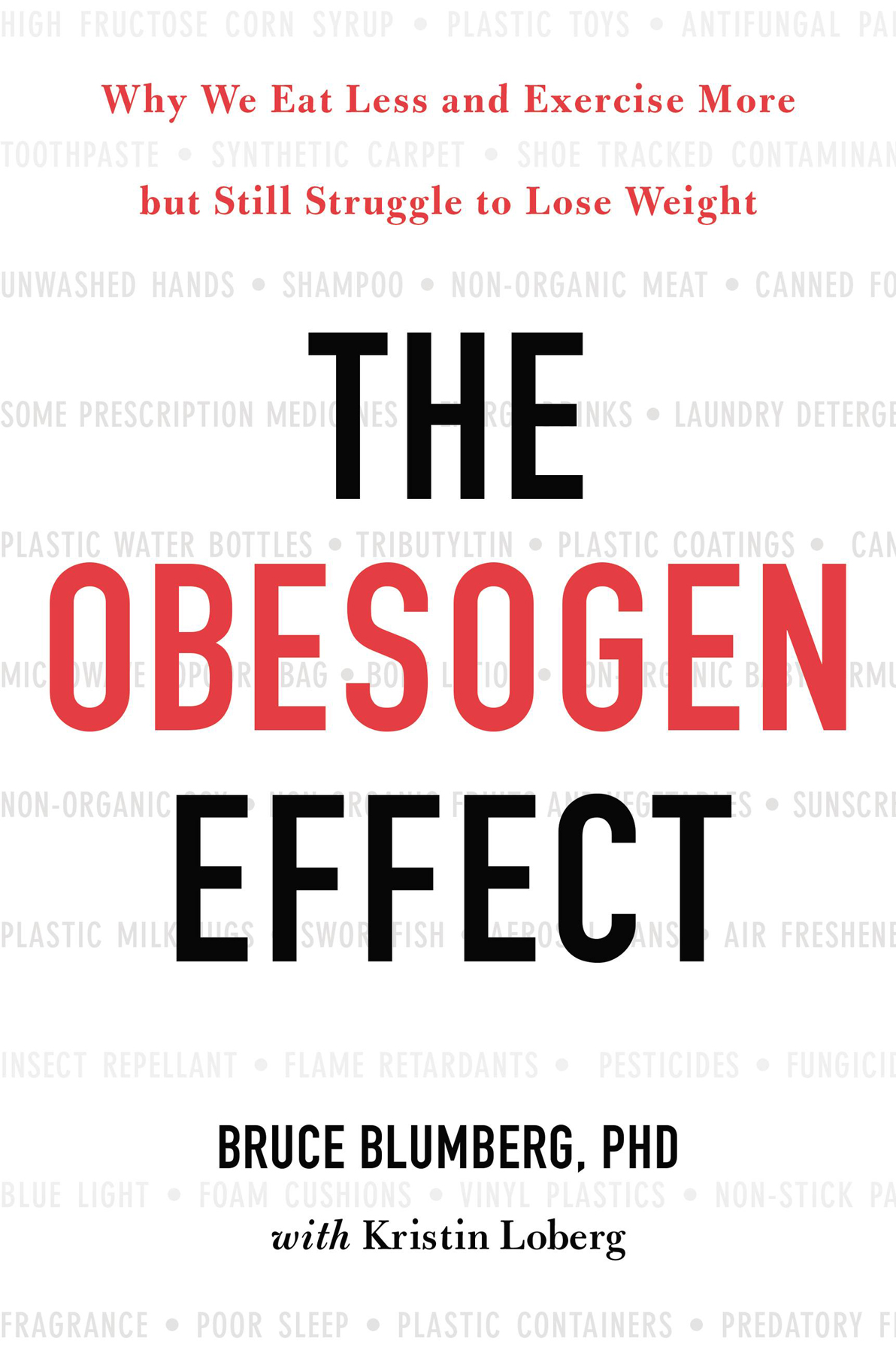Thank you for buying this ebook, published by HachetteDigital.
To receive special offers, bonus content, and news about ourlatest ebooks and apps, sign up for our newsletters.
The information herein is not intended to be a substitute for medical advice. This publication is intended to provide helpful and informative material on the subjects addressed. It is sold with the understanding that the author and publisher are not engaged in rendering medical, health, or any other kind of professional services in the book. You are advised to consult with your health care professional with regard to matters relating to your health and in particular regarding matters that may require diagnosis or medical attention. The author and publisher specifically disclaim all responsibility for any liability, loss or risk, personal or otherwise, which is incurred as a consequence, directly or indirectly, of the use and application of any of the contents of this book.
Copyright 2018 by Bruce Blumberg, PhD
Cover design by Brian Lemus. Cover copyright 2018 by Hachette Book Group, Inc.
Hachette Book Group supports the right to free expression and the value of copyright. The purpose of copyright is to encourage writers and artists to produce the creative works that enrich our culture.
The scanning, uploading, and distribution of this book without permission is a theft of the authors intellectual property. If you would like permission to use material from the book (other than for review purposes), please contact permissions@hbgusa.com. Thank you for your support of the authors rights.
Grand Central Life & Style
Hachette Book Group
1290 Avenue of the Americas, New York, NY 10104
grandcentrallifeandstyle.com
twitter.com/grandcentralpub
First Edition: March 2018
Grand Central Life & Style is an imprint of Grand Central Publishing. The Grand Central Life & Style name and logo are trademarks of Hachette Book Group, Inc.
The publisher is not responsible for websites (or their content) that are not owned by the publisher.
The Hachette Speakers Bureau provides a wide range of authors for speaking events. To find out more, go to www.hachettespeakersbureau.com or call (866) 376-6591.
Additional credits information is .
Library of Congress Cataloging-in-Publication Data
Names: Blumberg, Bruce, author.
Title: The obesogen effect : why we eat less and exercise more but still struggle to lose weight / Bruce Blumberg, PhD with Kristin Loberg.
Description: First edition. | New York : Grand Central Life & Style, 2018. | Includes bibliographical references.
Identifiers: LCCN 2017041727| ISBN 9781478970644 (hardcover) | ISBN 9781478970675 (ebook) | ISBN 9781478970668 (audio download) | ISBN 9781549168987 (audio book)
Subjects: LCSH: ObesityEpidemiologyPopular works. | Endocrine disrupting chemicals. | Weight loss. | BISAC: SCIENCE / Life Sciences / Cytology. | HEALTH & FITNESS / Weight Loss. | MEDICAL / Toxicology.
Classification: LCC RA645.O23 B58 2018 | DDC 362.196/398dc23
LC record available at https://lccn.loc.gov/2017041727
ISBNs: 978-1-4789-7064-4 (hardcover), 978-1-4789-7067-5 (ebook)
E3-20180207-JV-PC
For Dejoie and Arielle
What if everything you thought you knew about the biology of body weight is wrong?
When you think about the causes of overweight and obesity, conditions that now affect the majority of Americans, two factors likely come to mind immediately: dreadful dietary habits and lack of exercise. This is what I call the orthodox wisdom that we hear all the time. But what if I said you are wrong? Well, at least not 100 percent right. Youre missing a huge influence that has been driving our epidemic for the last half century, and it has nothing to do with a penchant for sitting on the couch eating potato chips and drinking regular soda. It has to do with obesogenschemicals in our environment that promote weight gain.
No one wants to be fat, but most of us are, despite working hard to eliminate unwanted pounds. Something is wrong with this narrative. I coined the term obesogens in 2006 to describe chemicals that can make you fat.explanation for our irrepressible fatness other than calories in versus calories out. And I was right.
Take a moment to consider this from a purely logical standpoint: If weight were simply determined by calories eaten minus calories burned (more formally called the energy balance equation), dont you think we would be able to easily manage our weight? Why can we balance our bank checkbooks, but not our caloric checkbooks? In arithmetic, one plus one equals two no matter what language you speak. But one plus one can equal more than two when it comes to the weight equation of the human body. I will explain how this is possible in the book.
Observational studies in humans have pointed to a strong link between exposure to certain environmental chemicals and greater body mass index (BMI). The easiest way to measure your BMI is to use an online calculator, which will divide your weight in kilograms by the square of your height in meters to arrive at the number.
An important 2016 study showed that average BMI today is higher than it was a little more than a generation ago, even when our caloric intake and physical activity is about the same.eat and exercise as they did back in the heyday of leg warmers and Sony Walkmans. And despite what you hear, we exercise more than we did in the 1980snot less. There is another explanation that will unfold chapter by chapter.
The time has come to present the untold story of obesogens with the hope that you can take better control of your waistline, your health, and especially the well-being of your children and future generations. After all, nowhere is the obesity epidemic more painfully disturbing to witness and acknowledge than in our young. In January 2016, the World Health Organization released a statement declaring that the number of obese children worldwide today is alarming. I will add the words disheartening and unacceptable.
I dont mean to minimize poor diet and physical inactivity; these remain leading causes of overweight and obesity. But we in the scientific community are increasingly finding that exposure to chemicals in our diet and environment may be an under-recognized risk factor. In the last decade, other researchers and I have identified dozens of chemicals that can increase susceptibility to becoming obese in animals and trigger cells grown in a lab (cultured cells) to become fat cells.I am talking about, many of which may surprise you because you never knew there was a connection to your weight. Losing weight is no longer only about putting down the doughnuts and hopping on a treadmill.
What is missing from the never-ending conversation about weight and how to control it is the role played by obesogens and how these little-acknowledged yet potent and deleterious substances that we encounter dailyin our food, households, workplaces, and even medicine cabinetsare severely impacting our waistlines and overall health. Obesogens contribute to obesity by disrupting the normal development and balance of fat metabolismhow your body creates and stores fat. Obesogens can reprogram stem cells in the body to develop into more fat cells. Obesogen exposure also changes how your body responds to dietary choices and handles calories. So even though you have bought into the latest trendsPaleo, low-carb, gluten-free, Zumba, or CrossFit gymsyou can still struggle mightily with weight because of what is in your environment (broadly defined).








